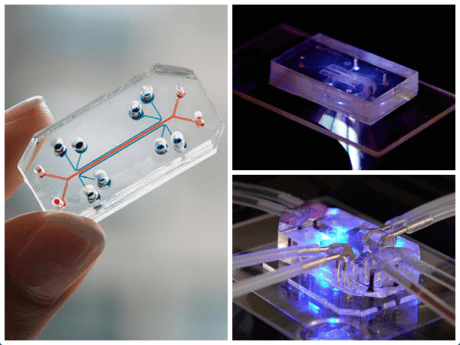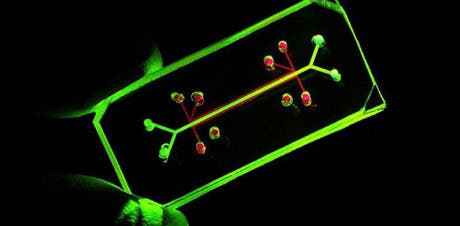A clear, apparently simple plastic chip could eliminate the need for animal testing and revolutionize drug development. The design, which basically mimics the functions of human organs, won the Design of the Year award from the Design Museum in London.
We first wrote about this design last year, but the technology actually emerged a few years back.
“The first program began about five years, ago, with lung-on-a-chip,” says Geraldine Hamilton, a senior staff scientist at Harvard University’s Wyss Institute for Biologically Inspired Engineering, which has led the technology’s development and is launching a new startup company this week to bring it to the commercial market. “We’ve also got the lung, gut, liver and kidney. We’re working on skin. The goal is really to do the whole human body, and then we can fluidically link multiple chips to capture interactions between different organs and eventually recreate a body on a chip.”
In the past few years, the idea has gained more and more attention, with Harvard researchers also working on “bone marrow on a chip.” The design does just what the name says: the microchip is embedded with small hollow tubes that are lined with human cells, through which air, nutrients, blood and infection-causing bacteria could be pumped – mimicking human organs. They work just like a chip, but instead of sending electrons through a metal, they send small quantities of chemicals past cells from lungs, intestines, livers, kidneys and hearts. Aside for making drug development much easier and cheaper, these chips could also remove the need for animal testing.
“They identified a serious problem: how do we predict how human cells will behave. And they solved it with elegance and economy of means, putting technology from apparently unrelated fields to work in new ways.” says London Design Museum director, Deyan Sudjic. He also emphasized that behind this revolutionary technology there is also a kind of beauty. “They have, perhaps unintentionally, created something that for a lay man seems to symbolise the essence of life and also happens to be beautiful to look at.”
A while ago, I detailed why drug research takes so long – 10-15 years and $4 billion spent on average. Even with all this investment, 90% of drugs never hit the market. Moreover 2008 study estimated 115 million animals are used a year for scientific research alone. Moreover, it’s believed ‘animal models’ are only typically 30% to 60% predictive of human responses to new drugs. That drug that prevents autism might work nicely for rats, but not that much for humans. So developing a way to accurately test drugs and see how they would actually work on humans might save millions of animal lives every year, as well as billions of dollars.
The silicon chips that can replace human organs have been manufactured by scientists at the Wyss Institute from the University of Harvard. It took them just 5 years to get from a theoretical proposal to actually building these chips. Tests that were carried out during the Design of the Year 2015 competition clearly illustrated that the chip contracts and relaxes itself much in the same way our lungs do. This is the most amazing thing to me – this is not some idea that could be implemented sometime in the future; this is something that works now! Sure, it will be a while until we can actually eliminate animal testing, but we can definitely do it. We have the technology.











